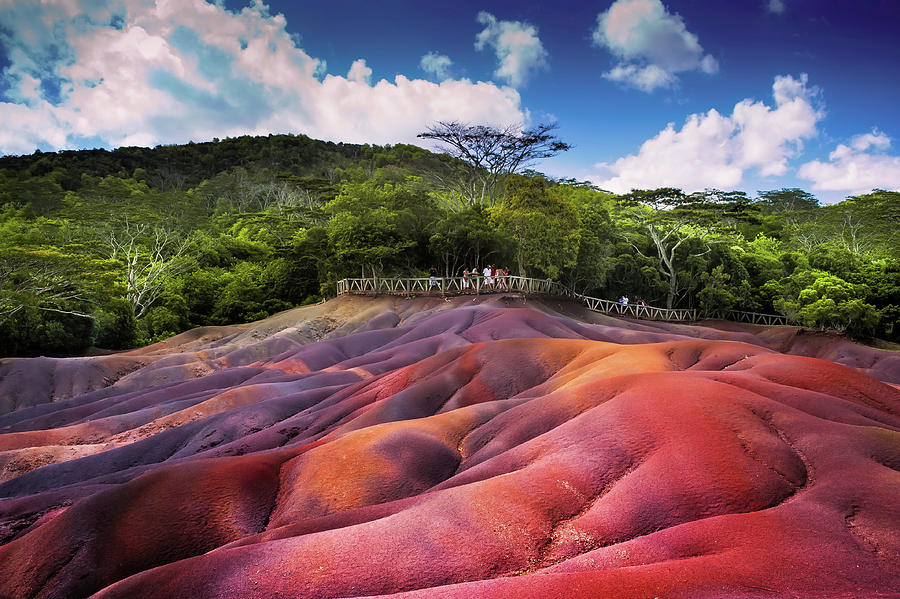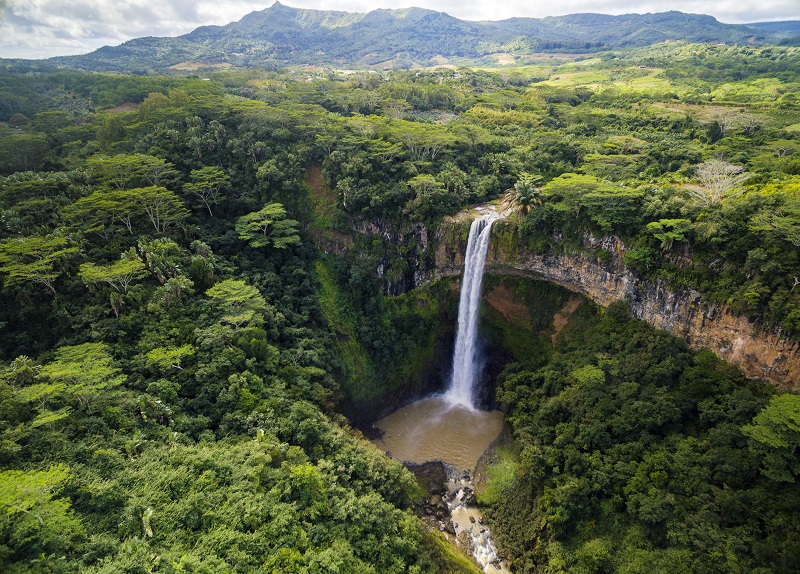Chamarel village, nestled in Mauritius within the Riviere Noire District, offers visitors a tranquil escape on the western hills of the island. With a population of approximately 783 residents and a low density of 26.5km x km, Chamarel exudes a serene ambiance amidst its scenic surroundings.
The village boasts several notable attractions, including the Seven Coloured Earths, renowned for its unique geological formations, the majestic Chamarel Falls, the lush Ebony Forest Chamarel, and the sprawling Black River Gorges National Park. Surrounding the area, visitors can observe locally grown coffee plantations, adding to the village’s rustic charm.
A focal point of the village is the Saint Anna Church, constructed in 1876, which hosts an annual pilgrimage on the Assumption of Mary, drawing devout worshippers from far and wide.
Chamarel’s idyllic setting, situated 6 km from the coast at an elevation of approximately 260 meters, offers breathtaking vistas of cascading waterfalls and wooded plateaus. The village is renowned for its hushed bucolic vibe and cool breezes, making it a haven for relaxation and rejuvenation.
The village derived its name, Chamarel, in the 1800s from the Frenchman Charles Antoine de Chazal Chamarel, who once resided in the area and owned the surrounding land. Despite its historical association, the village was colloquially referred to as the “Valley of Blacks” by local residents.
Chamarel’s primary plantations include sugarcane, pineapples, and coffee, with Arabica coffee plants and palm salad trees lining the path to the waterfall, offering visitors a glimpse of the area’s agricultural heritage.
For travelers seeking to explore Chamarel’s sights, a variety of guided tours are available, including visits to Piton Canot, Eglise Sainte, the Curious Corner of Chamarel, and the Seven Coloured Earth Geopark. Accessible via Mauritius International Airport, located 30 km away, Chamarel promises an unforgettable experience amidst its natural beauty and cultural heritage.
Seven Coloured Earths, Chamarel
The Seven Coloured Earth is a renowned tourist destination located in the plain of the Riviere Noire District in southwestern Mauritius. This unique natural phenomenon comprises a small area adorned with sand dunes displaying seven distinct colors: red, brown, violet, green, blue, purple, and yellow. The mesmerizing hues are a result of the sands settling in layers over time, creating a surreal and striped appearance.
The intricate patterns carved into the hillside by rainfall further enhance the visual spectacle, resembling earthen meringue. The sands themselves are formed from the decomposition of volcanic rock into clay, which is then transformed into ferralitic soil through total hydrolysis. The presence of iron and aluminum in the soil contributes to the striking red, anthracite, blue, and purplish colors, while variations in external temperatures during the cooling of molten volcanic rock result in the different shades observed.
Since the 1960s, the Seven Coloured Earth has captivated tourists with its breathtaking beauty. However, to preserve this natural wonder, the dunes are now protected by a wooden fence, and visitors are prohibited from climbing on the rocks. Instead, observation outposts placed along the fence allow tourists to admire the scenery and marvel at the captivating colors from a safe distance. Despite these restrictions, the Seven Coloured Earth continues to attract visitors from around the world, offering a glimpse into the awe-inspiring wonders of nature.



